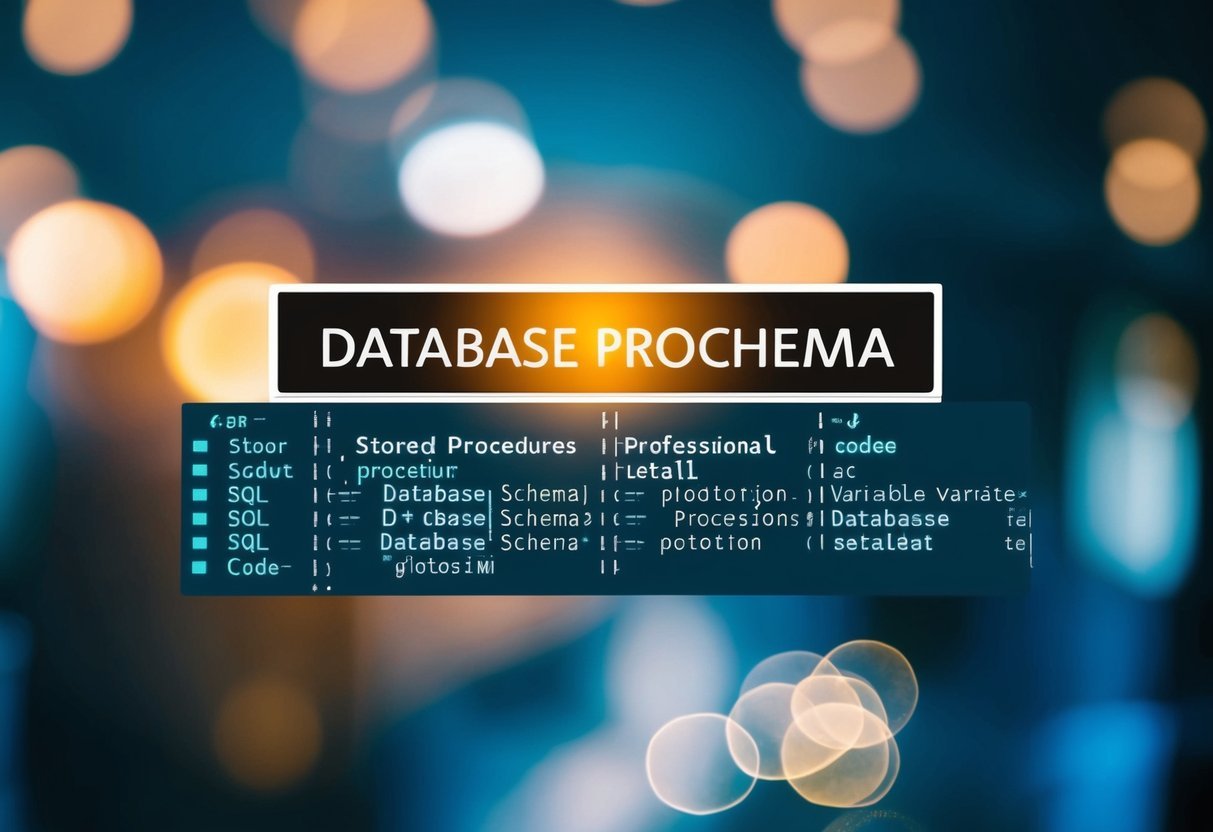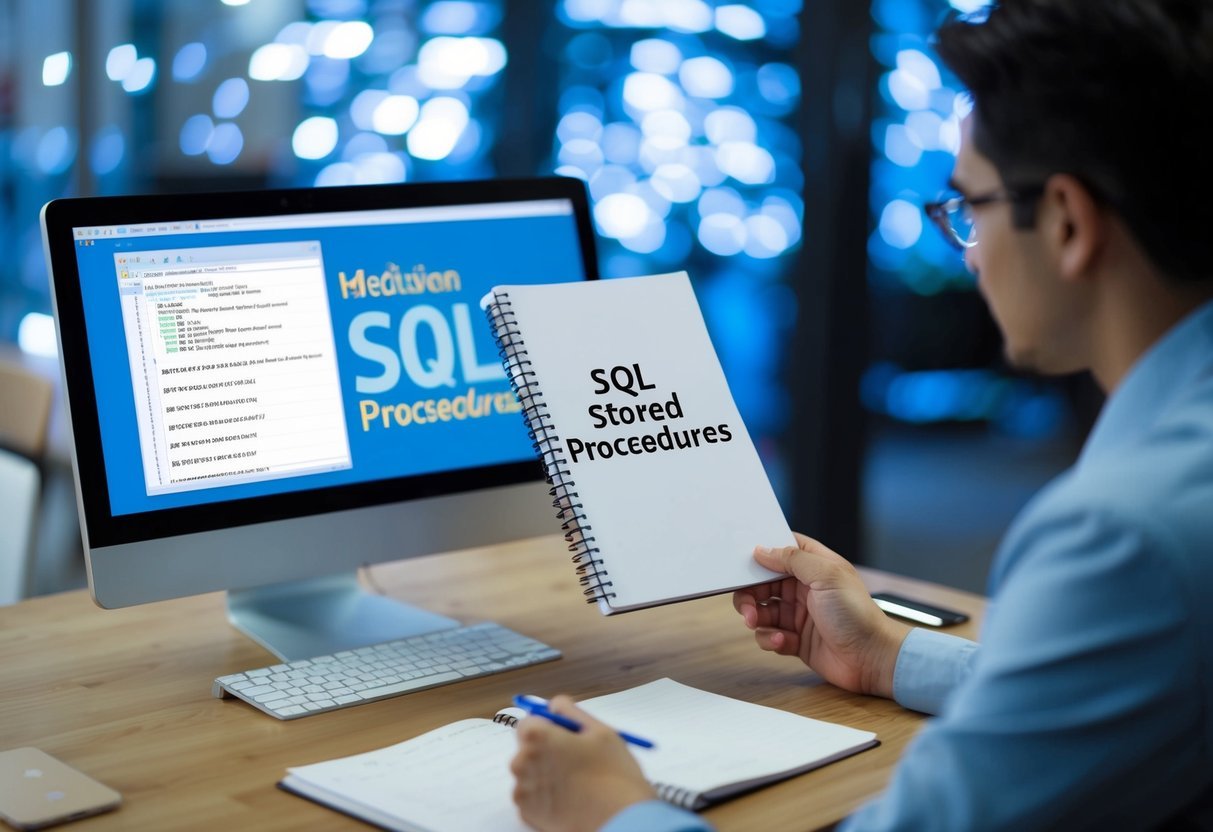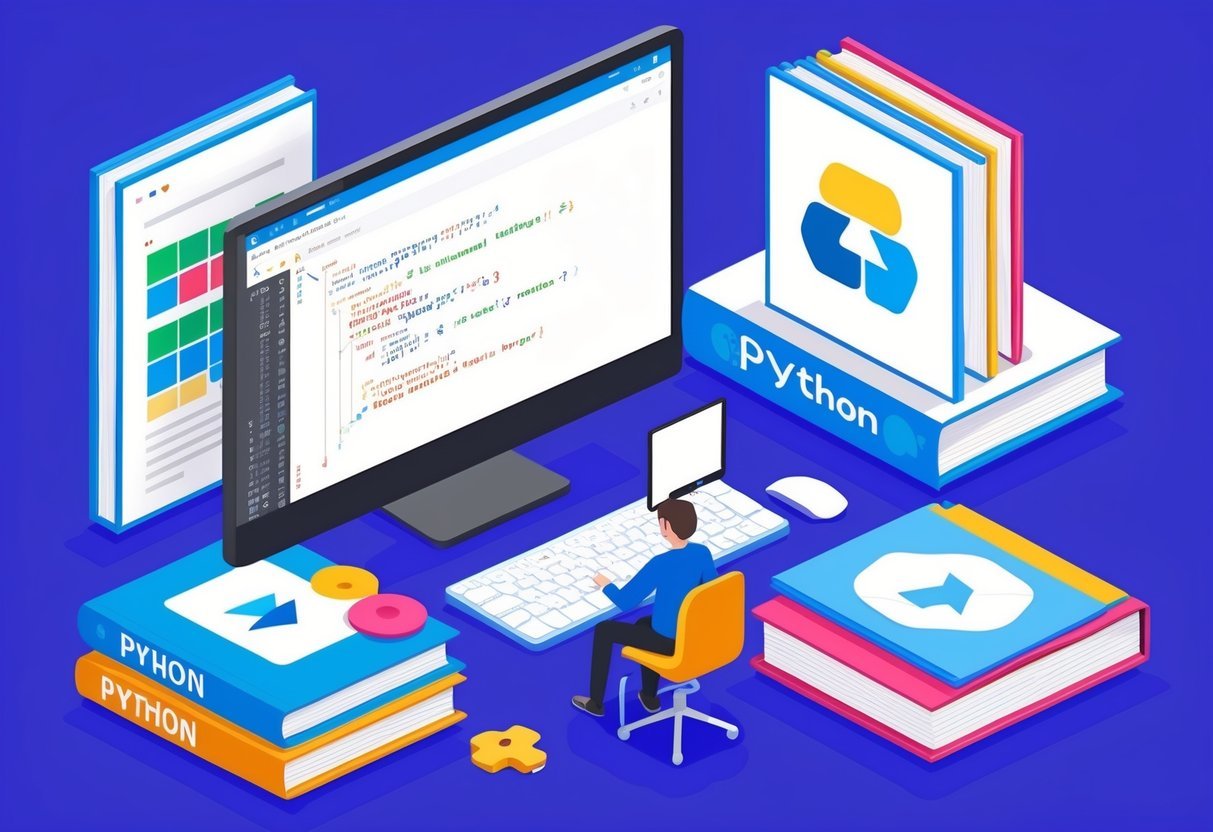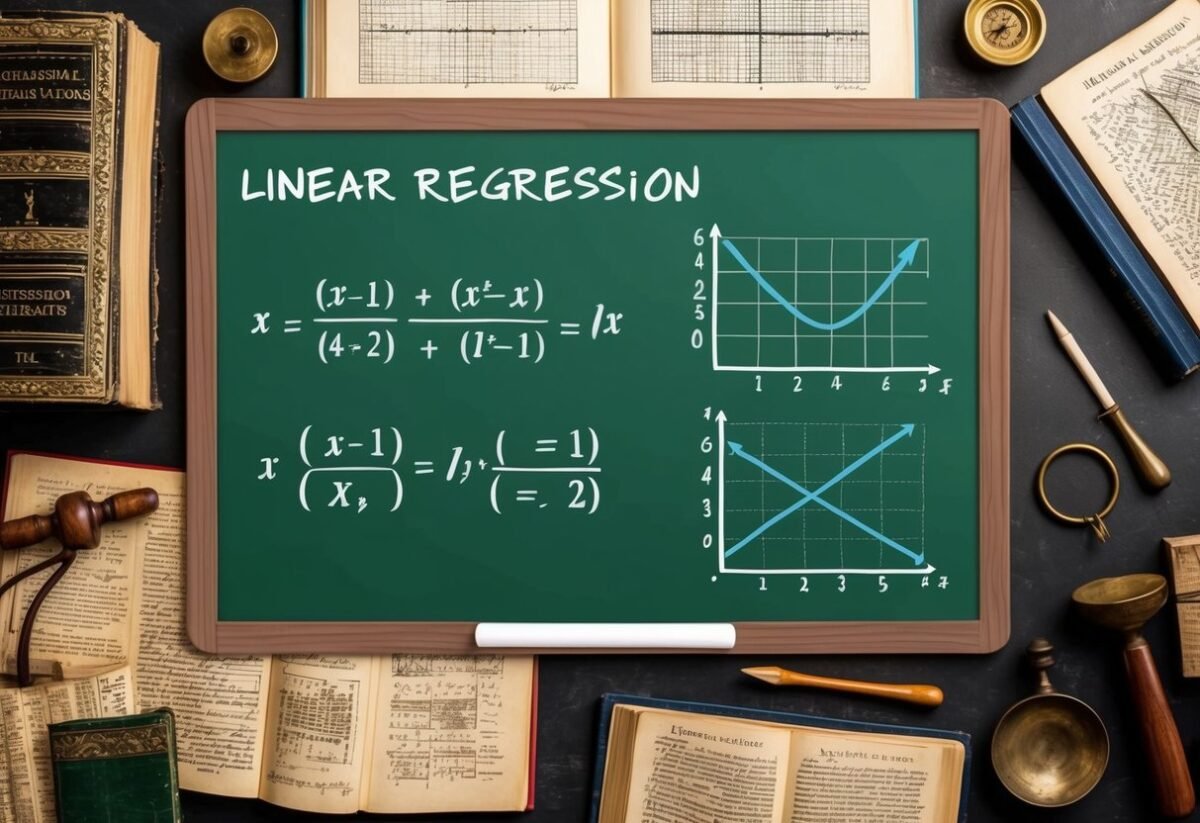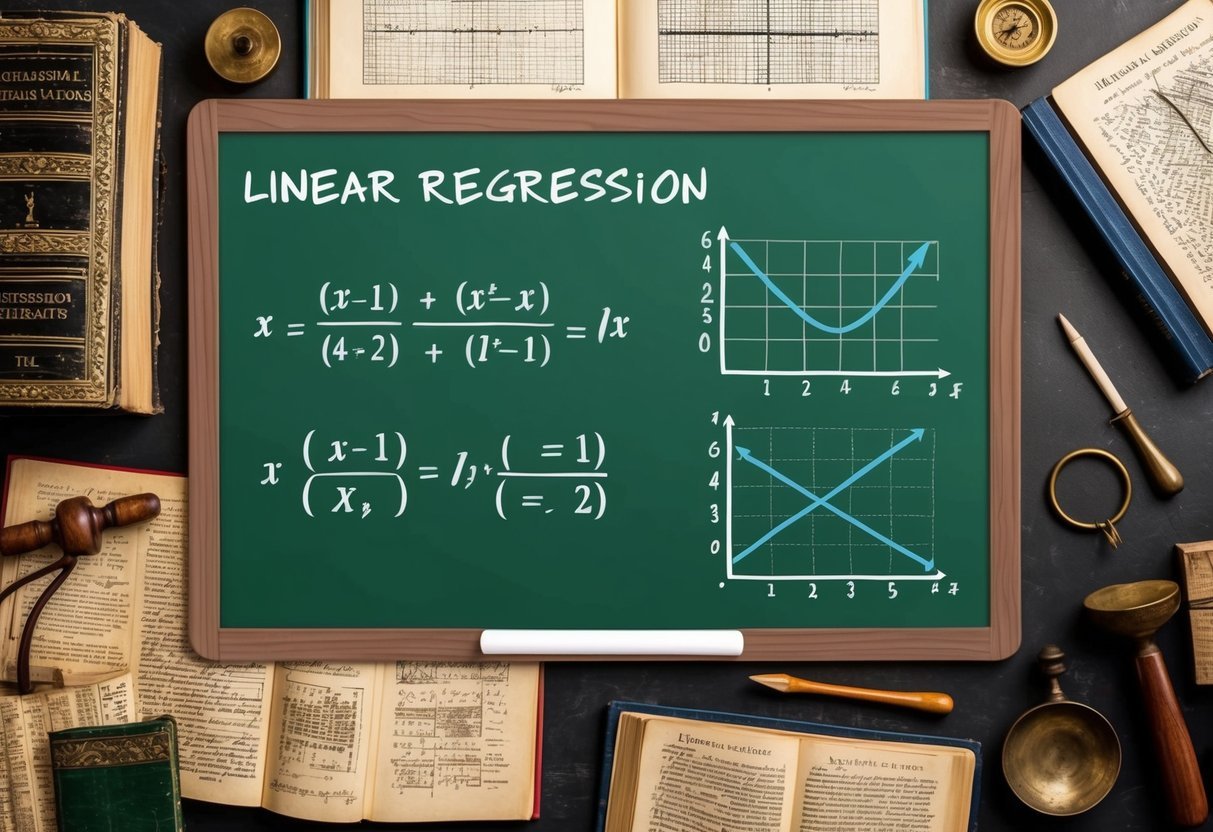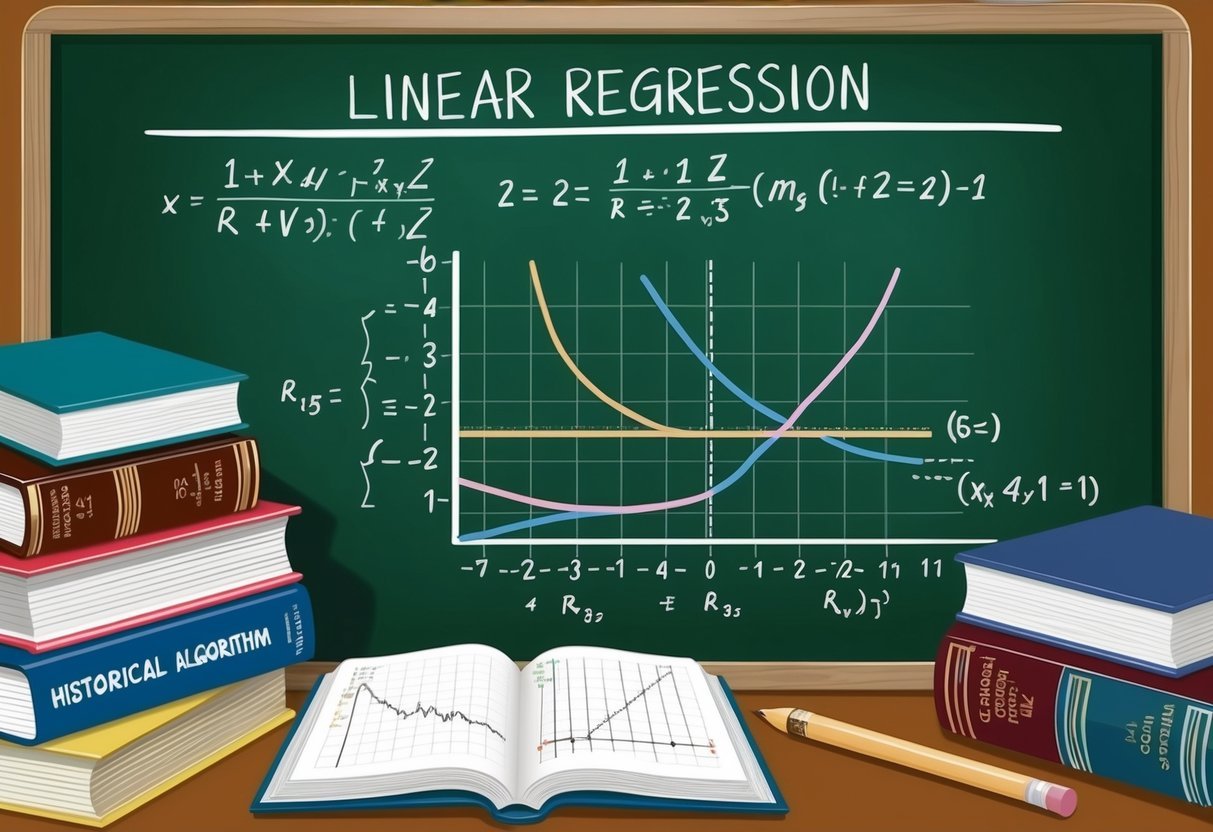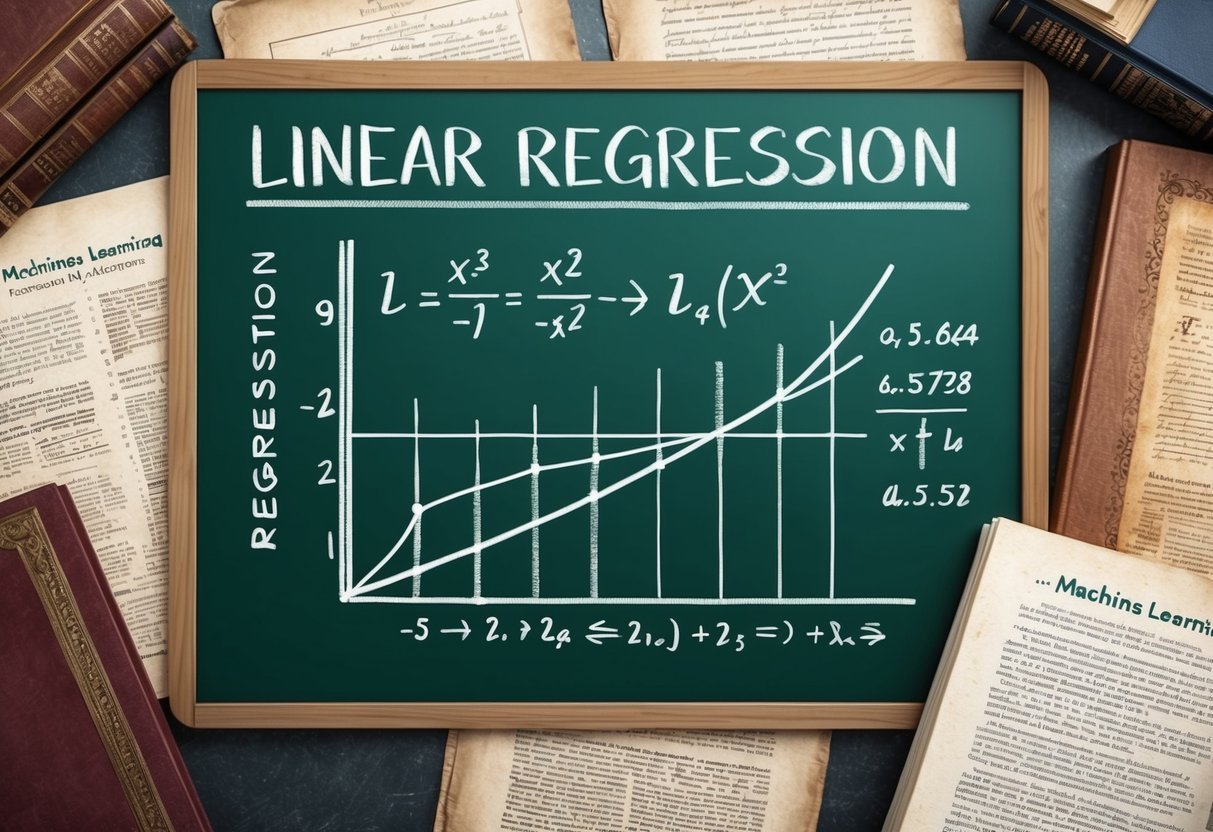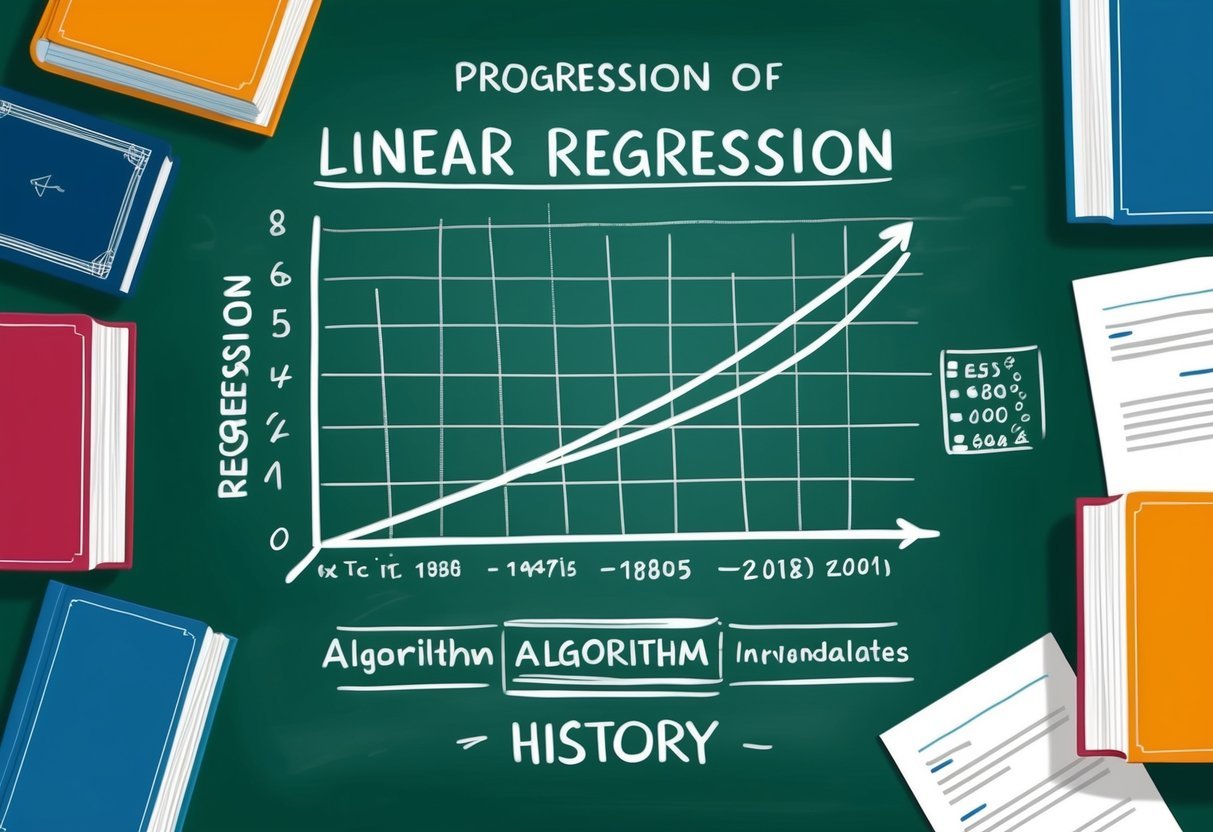Getting Started with Python
Getting started with Python is about learning essential concepts and setting up the right tools.
Mastering the basics of Python and preparing the development environment is key for beginners.
Python Basics
Python is a versatile programming language known for its clear syntax and readability.
Beginners should start by understanding Python’s core features like variables, data types, and control structures.
Variables are used to store data that can be changed later. Data types such as int, str, float, and bool are foundational.
Control structures like if statements and loops (for and while) control the flow of a program.
Learning about functions is also crucial. Functions are blocks of code that perform specific tasks and help make programs more manageable.
Practicing by writing simple programs can help solidify these concepts.
Setting up the Development Environment
A proper environment is essential for coding with Python.
Beginners can start with Python’s official website to download the latest version of the language.
Using an Integrated Development Environment (IDE) like PyCharm or a code editor such as VS Code makes coding easier.
These tools offer features like syntax highlighting and debugging.
Setting up pip, Python’s package manager, allows installation of useful libraries and tools.
Command-line tools can also be beneficial for running scripts directly from the terminal.
With these tools installed, beginners can smoothly transition into the world of Python programming.
Understanding Python Data Structures

Python offers a variety of data structures for organizing and storing data. These include primitive data types like numbers and strings, as well as complex data structures such as lists, tuples, dictionaries, and sets. Each type has unique characteristics and uses in programming.
Primitive Data Types
Primitive data types are the building blocks of more complex data structures. They include integers, floating-point numbers, strings, and booleans.
Integers and floating-point numbers are used for numerical operations. Strings store sequences of characters, enclosed in quotes, and are useful for text manipulation.
Booleans have two values: True and False, often used for conditional statements or loops.
Variables store these primitive types. When a variable is declared, it is assigned a data type. For instance, x = 10 is an integer variable, while name = "Python" is a string.
Understanding these basic elements is key to grasping more advanced Python data structures.
Complex Data Structures
Complex data structures in Python include lists, tuples, dictionaries, and sets.
Lists are mutable and store ordered collections of elements. They are defined using square brackets, like my_list = [1, 2, 3].
Tuples are similar to lists but are immutable, meaning they cannot be changed once created, written with parentheses: my_tuple = (1, 2, 3).
Dictionaries store key-value pairs, where each key maps to a value. They are declared with curly braces, like my_dict = {'key1': 'value1', 'key2': 'value2'}.
Sets are unordered collections of unique elements and are defined with curly braces: my_set = {1, 2, 3}.
Each structure serves a different purpose, allowing for efficient data manipulation and storage.
Writing Your First Python Code

Learning Python for data science often begins with understanding its basic syntax and the creation of functions. This section breaks down these essential skills, providing a practical foundation for beginners.
Basic Syntax
Python’s syntax is straightforward, making it an ideal choice for beginners. The language uses indentation to define code blocks, such as loops and functions, instead of curly braces. This makes the code clear and easy to read.
Variables in Python do not require explicit declaration of their type; one can write a statement like x = 5 without specifying that x is an integer.
Comments, marked by the # symbol, are crucial for explaining code.
Python also supports various data types such as integers, floats, and strings.
Lists, which store multiple items in a single variable, are important for handling collections of data.
Simple operations like loops can be written using for and while statements, providing powerful ways to automate repetitive tasks.
Creating Functions
Functions help organize code into reusable blocks, making it more efficient and easier to manage.
In Python, a function is defined using the def keyword followed by the function name and parentheses. For example:
def greet(name):
return f"Hello, {name}"
Functions can take parameters, allowing them to operate on different data inputs. They can also return values using the return statement. This feature allows other parts of the program to use or display the result.
Using functions promotes clean and organized code, enabling easier troubleshooting and reuse.
Functions can be combined with loops to perform repetitive tasks on different sets of data, enhancing Python’s versatility in data science projects.
Working with External Data

Accessing and utilizing external data is crucial in data science. Handling files like CSV and JSON is common for data storage and exchange, while interacting with APIs helps to retrieve data from online sources.
File Handling
Understanding how to work with different file types is important for managing external data.
CSV files are widely used because they are simple and compatible with many software applications. Python libraries such as pandas offer functions to easily read from and write to CSV files, enabling efficient data manipulation.
JSON files are also common, especially for data exchanged between web services. The json module in Python helps in parsing JSON files, converting them into Python dictionaries or lists for easy manipulation.
Different libraries in Python enable the handling of these file types, supporting functions to read, write, and process data efficiently.
By mastering these skills, one can integrate a variety of data sources into their analysis.
API Interaction
APIs allow access to external data and services, which is valuable for retrieving up-to-date information.
Users can interact with APIs by sending requests to specific endpoints and receiving data, usually in JSON format.
Python offers libraries such as requests to simplify API interaction, handling authentication and response parsing.
Understanding how to construct requests and handle responses is essential.
Accessing APIs extends the dataset, enriching analysis with data from diverse sources like weather services, financial data providers, and more.
Through effective API communication, data scientists can expand their datasets beyond local files, integrating real-time data into their projects. This enhances the scope of analysis and decision-making capabilities.
Exploring Python Libraries
Python libraries are essential for data science projects. Two key areas where these libraries shine are numerical computing and data manipulation. Understanding these concepts helps data scientists work more efficiently and effectively.
Numerical Computing
Numerical computing is a core component of data science, and with libraries like NumPy, Python is a powerful tool for these tasks.
NumPy introduces the numpy array, a fast and flexible container for large data sets. This array supports operations like addition, subtraction, and multiplication directly on data sets.
Users benefit from features such as broadcasting, which allows operations to be performed across arrays of different shapes and sizes.
Functions for linear algebra and statistical operations are also part of NumPy, making it indispensable for complex numerical tasks.
For more details on essential libraries, check out this list of Python libraries for data science.
Data Manipulation
Data manipulation is crucial for cleaning and transforming raw data into a usable format.
The pandas library excels in this area with its DataFrame and Series objects. These structures, similar to tables, allow for easy manipulation of structured data.
With pandas, data scientists can sort, filter, and group data with straightforward commands. The library is perfect for handling missing data, merging datasets, and performing time-series analysis.
Its intuitive syntax and robust functionality make it popular for preparing data.
For more on how pandas compares and incorporates with other tools, see these Python libraries resources.
Data Cleaning Techniques
Data cleaning is an essential part of data science, ensuring accuracy and reliability in analysis. This section explores techniques to handle missing values and deal with outliers, key steps in maintaining data integrity.
Handling Missing Values
Missing values can affect the accuracy of data analysis. When working with a dataframe, identifying and handling these gaps is crucial.
A common approach is to fill missing values with mean, median, or mode, which can help maintain data balance. Alternatively, missing values may be removed if they are minimal or random.
Use libraries like Pandas to quickly identify missing values using methods such as isnull().
Imputation methods are another effective way to deal with missing data. K-Nearest Neighbors (KNN) and regression imputation predict missing values based on similarities in the dataset.
These methods tend to offer more reliable results than simple replacements.
Evaluating the extent and pattern of missingness helps choose the most appropriate approach.
Dealing with Outliers
Outliers are data points that significantly differ from others in a dataset. To manage outliers, first visualize the data using plots like box plots or scatter plots. These tools can help identify data points that fall outside expected ranges.
Statistical methods like the Z-score or IQR (Interquartile Range) also help in detecting these anomalies.
Once outliers are identified, decide whether to transform, cap, or remove them.
Transformation may involve applying a logarithmic scale to reduce their impact. Capping involves setting outlier values to the nearest non-outlier limit, preserving the data’s integrity.
In some cases, removing outliers might be the best option, especially if they result from errors. This can lead to more accurate modeling and analysis.
Data Analysis Fundamentals

Data analysis involves examining and visualizing data to extract meaningful insights. Key concepts include using descriptive statistics to summarize data and exploratory data analysis to explore patterns and correlations.
Descriptive Statistics
Descriptive statistics are essential tools in data analysis that help summarize and describe the features of a dataset. They include measures like mean, median, and mode, which indicate the central tendency of the data.
Standard deviation and variance tell us about the data’s spread and how much the data points diverge from the average.
Visuals like histograms and box plots are used to see distributions clearly.
Histograms show the frequency of data points within specified ranges, while box plots summarize data through quartiles, highlighting outliers.
Table of Common Statistics:
| Statistic | Description |
|---|---|
| Mean | Average value of the data |
| Median | Middle value in the ordered data |
| Mode | Most frequent value in the dataset |
Understanding these statistics is crucial for analyzing data effectively. They provide insights into patterns and anomalies, helping in data exploration and decision-making.
Exploratory Data Analysis
Exploratory Data Analysis (EDA) is all about digging into the dataset to discover patterns, spot anomalies, and check assumptions. It uses visual methods to facilitate understanding of the data’s structure.
Techniques include plotting scatter plots to find relationships between variables and creating heatmaps to visualize data correlations.
EDA is often a crucial first step in data analysis. It involves looking at the shapes of distributions and spotting trends.
It helps analysts ask further questions and guide the direction of more in-depth analysis.
Interactive tools, such as Jupyter notebooks, make EDA more efficient by allowing real-time manipulation and visualization of data.
Using EDA, analysts develop hypotheses and insights guiding the data science process. It ensures that conclusions drawn from the data are based on a sound understanding of its fundamental properties.
Effective Data Visualization
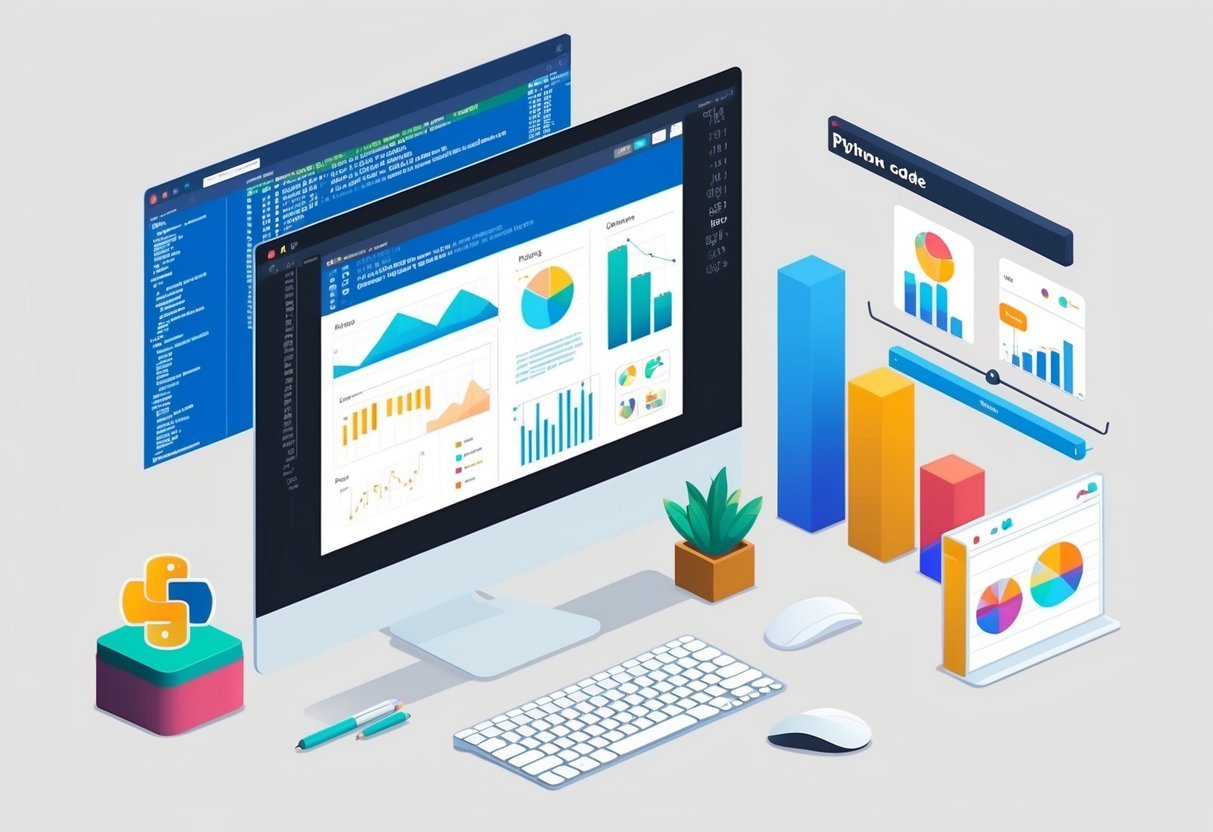
Creating clear and impactful visualizations with Python is an essential skill for data science. Understanding which tools to use and how to make plots meaningful helps convey complex data efficiently.
This section covers popular visualization tools and tips for creating effective plots.
Visualization Tools
Python offers several tools for data visualization. Matplotlib is one of the most popular libraries, known for its ability to create a wide range of static, animated, or interactive plots.
It is flexible, allowing customization of plots to suit specific needs.
Another strong option is Seaborn, which is built on top of Matplotlib and focuses on statistical data visualization. It simplifies the process of creating complex visualizations by offering a higher-level interface.
With Seaborn, users can quickly create attractive and informative plots without needing extensive code.
For more interactive visualizations, Bokeh is an excellent choice. It allows for creating dashboards and interactive plots that can be easily shared on the web.
Bokeh is particularly useful for presenting data that requires user interaction, such as zooming or panning.
Creating Meaningful Plots
To create meaningful plots, it is important to choose the right type of plot for the data being presented. A good practice is to keep plots simple and focused on the main message.
Bar charts are useful for comparing categories, while line charts are often used to show trends over time.
Ensure that axes are labeled clearly, and use appropriate scales to represent data accurately. Adding titles and captions can provide context and help the reader understand the visualization better.
Colors and labels enhance a plot’s readability. Using contrasting colors can highlight significant parts of the data. Including a legend also aids in identifying different data series in a plot, which is especially important when dealing with multiple data sets.
Introduction to Machine Learning
Machine learning is transforming the data science community. It can be divided into two primary categories: supervised and unsupervised learning.
Supervised Learning
Supervised learning involves training a model on a labeled dataset. This means the data includes both input features and the corresponding desired output.
The model learns to map inputs to the correct outputs by identifying patterns in the data. A popular example includes classification, where the model predicts discrete outcomes, like spam detection in emails.
Another key area is regression analysis. This helps in predicting continuous values, such as forecasting house prices.
In the data science community, supervised learning is valued for its ability to make accurate predictions. It relies heavily on algorithms like decision trees, support vector machines, and neural networks.
In practice, a large dataset is crucial for a successful supervised learning model. Data scientists often spend significant time preprocessing data to enhance accuracy.
Unsupervised Learning
Unsupervised learning focuses on finding patterns in data without labeled outputs. It is used to uncover hidden structures in datasets.
Clustering is a common method, where algorithms group similar data points together. An example is customer segmentation, which helps businesses tailor their marketing strategies.
Another use is dimensionality reduction. It simplifies data by reducing the number of features, which is key when handling large datasets. Algorithms such as k-means clustering and principal component analysis are widely used.
The data science community values unsupervised learning for its ability to uncover insights without explicit guidance. Unlike supervised learning, it requires less human intervention, making it appealing for exploring unknown data structures.
Development Tools and Environments

When learning Python for data science, choosing the right tools and environments is crucial. Starting with an integrated development environment (IDE) can enhance productivity, while exploring the Jupyter ecosystem offers powerful interactive capabilities.
Integrated Development Environments
An integrated development environment (IDE) is a software application that provides comprehensive facilities to programmers for software development.
Many choose an IDE like PyCharm, Spyder, or Visual Studio Code because they offer features like code completion, debugging, and syntax highlighting. These features help in managing projects and writing efficient code.
PyCharm is popular for its advanced code navigation and great integration with version control systems.
Spyder is particularly favored among data scientists because it offers a scientific computing approach with features like variable explorer and plotting capabilities.
Visual Studio Code is highly extensible with numerous plugins, which makes it suitable for various programming tasks beyond Python.
Jupyter Ecosystem
The Jupyter ecosystem is a collection of tools designed to support interactive and exploratory computing.
Jupyter Notebook is an open-source web application that allows users to create and share documents containing live code, equations, visualizations, and narrative text. These notebooks are widely used in data science for different tasks, including cleaning and transforming data, numerical simulation, statistical modeling, and machine learning.
Jupyter Notebooks are ideal for prototyping and testing ideas. They encourage a hands-on learning approach and allow easy sharing and collaboration.
The ecosystem also includes JupyterLab, which is an enhanced version of the traditional Jupyter Notebook. It offers a more flexible and powerful interface for complex projects, supporting multiple file formats and real-time editing.
Advancing Your Career in Data Science
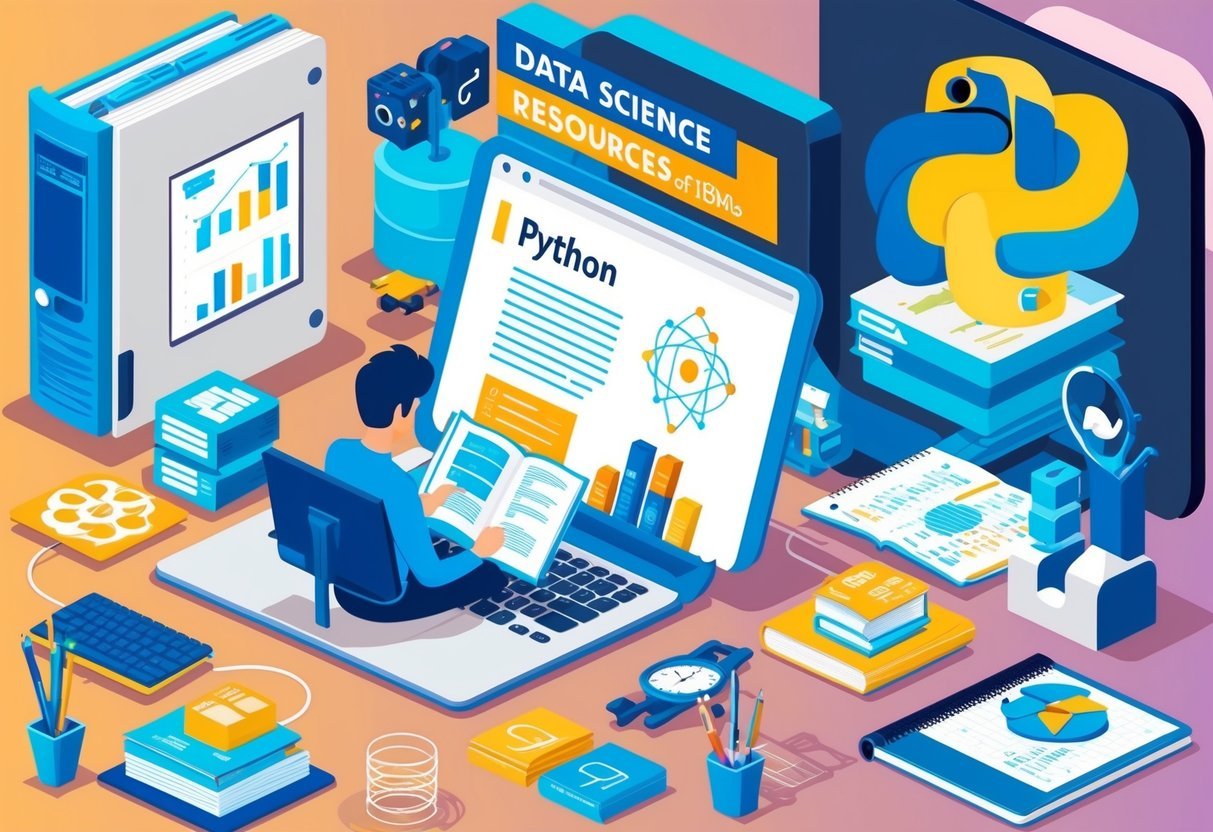
For those looking to advance in the field of data science, expanding one’s network and continuing education are key strategies. Building connections in the industry can open doors to new opportunities, while gaining certifications can enhance skills and credentials.
Building a Professional Network
Connecting with other data science professionals can be highly beneficial. Platforms like LinkedIn are excellent for creating and maintaining a professional profile that showcases skills and achievements.
Participating in data science forums and attending industry conferences can also expand one’s network.
Mentorship is another valuable aspect of networking. Seeking guidance from experienced data scientists can provide insights into effective career paths and necessary skills.
Joining local or online communities focused on data analysis and science can facilitate these relationships.
Certifications and Online Learning
Certifications play an important role in demonstrating expertise in data science. Platforms like Coursera offer career certificates and online degrees that focus on essential data science skills.
These programs often include hands-on projects that provide practical experience.
For beginners and experienced professionals alike, pursuing certifications can validate their expertise and increase their career prospects.
Utilizing resources such as Coursera Plus can provide access to a wide range of courses, allowing data analysts and scientists to customize their learning path.
Upgrading qualifications through these certifications can be a strategic step in advancing a career in data science.
Engaging with the Data Science Community

Being a part of the data science community can accelerate learning and provide valuable networking opportunities. Engaging with this community helps in gaining insights from industry experts and enhances collaboration.
Participating in Forums
Participating in online forums is a great way for newcomers to immerse themselves in the data science community. Platforms like Stack Overflow and Reddit allow individuals to ask questions, share knowledge, and discuss topics with like-minded people.
Forums are often rich with discussions led by industry experts, offering insights on real-world problems and solutions.
Many forums also offer shareable certificates for completing certain challenges or courses, adding value to one’s learning journey.
Engaging in these discussions can lead to professional connections and collaborations, providing a flexible schedule for learning. It’s a space where beginners can start contributing to discussions while learning from the shared experiences of others.
Attending Workshops and Webinars
Workshops and webinars offer direct interaction with experienced data scientists and industry experts. These events are often tailored to current industry trends and can cover a wide range of topics from beginner to advanced levels.
Attendees can gain hands-on experience with tools and techniques used in data science.
Webinars often provide opportunities for real-time Q&A sessions, enabling participants to clarify doubts instantly.
Both workshops and webinars may offer a shareable certificate upon completion, showcasing one’s dedication to learning.
Many events are scheduled to fit a flexible schedule, making them accessible for those with other commitments. Attending these gatherings can be a great way to stay updated with the latest developments in the field.
Frequently Asked Questions
For those new to Python and data science, starting off with basic skills and using online resources can be very effective. Building a strong foundation in Python is key for success in data-driven roles.
How can I start learning Python for data science from scratch?
Begin by exploring free online tutorials and courses that cover basic Python syntax and concepts. Practical exercises, such as those on Dataquest, can help reinforce learning.
What are the core Python skills needed for a data analyst?
Core skills include Python programming fundamentals, data manipulation with pandas, data visualization, and understanding libraries like NumPy. Familiarity with Jupyter notebooks adds an interactive dimension to data analysis.
Which are the best online platforms to learn beginner Python skills for free?
Platforms such as Coursera and Codecademy offer comprehensive courses for beginners, often providing starter modules at no cost.
How can one build a Python-focused resume for a career in data science?
Highlight Python skills, the ability to use data science libraries, and experience with data analysis. Adding courses and projects, like those from Coursera on Python for Data Science, showcases knowledge and practical experience.
What Python learning path is recommended for step-by-step mastery for data science applications?
Start with Python basics, then move on to understanding data manipulation, analysis, and visualization. Follow a structured path with platforms like Dataquest that provide a guided learning experience.
Are there any specific Python frameworks or libraries that are considered essential for data science?
Essential libraries include pandas for data manipulation, NumPy for numerical operations, and scikit-learn for machine learning models.


















